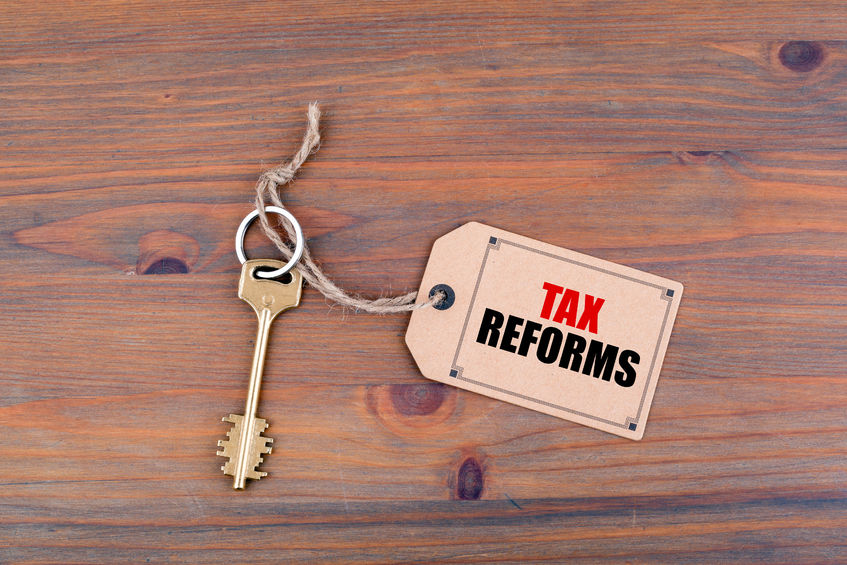Partnerships and LLCs affected by Recent Tax Law Changes…
Recent Tax Law Changes Affecting Partnerships and LLCs and their Owners
The Tax Cuts and Jobs Act (“TCJA”), passed by Congress and signed into law by President Trump in December 2017, includes several changes that affect partnerships and their partners, and LLCs that are treated as partnerships for tax purposes, and their members. While most of the changes are good news, one always has to take the Good with the Bad. Here are some of the highlights:
Technical Termination Rule Repealed (Good)
Under prior law, a partnership, or an LLC treated as a partnership for tax purposes, was considered terminated for federal income tax purposes if, within a 12-month period, there was a sale or exchange of 50 percent or more of the partnership’s or LLC’s capital and profits interests.
Fortunately, the TCJA repealed the technical termination rule, effective for partnership or LLC tax years beginning in 2018 and beyond. This is a permanent change. Thank you, Congress!
Lower Tax Rates for Individual Partners and LLC Members (Good)
For 2018 through 2025, the TCJA retains seven tax rate brackets for ordinary income and net short-term capital gains recognized by individual taxpayers, including income and gains passed through to individual partners and LLC members.
Six of the rates are lower than before. In 2026, the rates and brackets that were in place for 2017 are scheduled to return, but there is some doubt as to whether or not the tax rates will be changed. We’ll all just have to wait and see.
Unchanged Rates for Long-Term Gains and Qualified Dividends (Good)
The TCJA retains the 0, 15, and 20 percent tax rates on long-term capital gains and qualified dividends recognized by individual taxpayers, including gains and dividends passed through to individual partners and LLC members. After 2018, these brackets will be indexed for inflation (Even Better).
New Pass-Through Business Deduction (Good and Bad)
For tax years beginning in 2018-2025, the TCJA establishes a new deduction based on your share of qualified business income (“QBI”) passed through from a partnership or LLC.
The deduction generally equals 20 percent of QBI, subject to restrictions that can apply at higher income levels. This is generally Good.
We do have to advise you that this is going to make tax preparation for certain business owners more complicated and, accordingly, tax preparation time and tax preparation fees are going to reflect the new complexity (That’s Bad). Maybe this is another case where Congress could have named the Bill the “Tax Professionals’ Employment Guarantee Act” instead of the TCJA.
New Limits on Deducting Business Losses (Not Good)
For 2018-2025, the TCJA made two changes to the rules for deducting an individual taxpayer’s business losses. Unfortunately, the changes are NOT in your favor.
For tax years beginning in 2018-2025, you cannot deduct an excess business loss in the current year. An excess business loss means the amount of a loss in excess of $250,000, or $500,000 if you are a married joint-filer. The excess business loss is carried over to the following tax year, and you can then deduct it under new rules for deducting net operating loss (“NOL”) carry-forwards, explained below.
Key Point (And this is the part where you’re likely to doze off): This new loss disallowance rule applies afterapplying the passive activity loss (“PAL”) rules. So, if the PAL rules disallow your business loss, you don’t get to use the new loss disallowance rule.
For NOLs arising in tax years beginning in 2018 and beyond, the TCJA stipulates that you generally cannot use an NOL carryover to shelter more than 80 percent of taxable income in the carryover year. Under prior law, you could generally use an NOL carryover to shelter up to 100 percent of your taxable income in the carryover year.
Another TCJA change stipulates that NOLs arising in tax years ending after 2017 generally cannot be carried back to an earlier tax year. You can carry such losses forward only. But you can carry them forward indefinitely.
Under prior law, you could carry an NOL forward for no more than 20 years.
As you can see from this very brief glimpse, the TCJA made many changes to the tax landscape that can affect you and most of the changes are good, but some are not so good. If you have questions, please don’t hesitate to contact us and schedule an appointment with one of our tax professionals.


